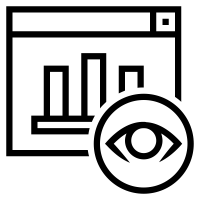Abstract
Introduction. Excess salt consumption is a main determinant of the disease burden ascribed to high blood pressure leading to many serious complications, premature mortality and significant health costs. Based on clear evidence on the link between salt intake, blood pressure and vascular risk, the WHO recommends to implement salt reduction strategies. A 30% lowering in the mean population salt intake by 2025 has been included as one of the targets of the ‘25 by 25’ WHO initiative for the control and prevention of noncommunicable diseases.
Material and methods. Electronic database PubMed was searched for studies reporting on salt intake and salt reduction strategies in India published between 2011 and 2021. Data were retrieved also form the websites of India’s official health authorities and WHO. Search was done using keywords and was limited to studies published in English language.
Results. Cardiovascular diseases (CVDs) became the leading cause of disease burden and death in India during the last decades. Overall, CVDs contributed 28.1% of the total death and 14.1% of the total disability-adjusted life-years (DALYs) in India in 2016 compared with 15.2% and 6.9%, respectively, in 1990. Dietary risks (56.4%), including high sodium intake, and related high systolic blood pressure (54.6%) are the two leading and overlapping risk factors contributing to DALYs in 2016. Salt intake is very high across different regions of India with the average daily intake ranging between 9 and 12 grams daily.
The intake is reported to be higher in urban settings compared to rural settings. A recent large study from south India revealed that mean dietary sodium intake was significantly higher in the hypertensive men (4.2±2 g/day) and women (3.2±1.7 g/day) compared with normotensive men (4±2 g/day), and women (3.2±1.7 g/day; P<0.05).
Discretionary salt is the main contributor of excess dietary salt. Knowledge, attitudes, and practices of the population regarding optimal salt intake are generally poor. India aims at a 20% and 30% reduction in salt intake by 2020 and 2025 respectively. Population-based strategies on reducing salt consumption need to be effectively implemented given the high prevalence and growing burden of hypertension. India plans to use WHO’s Three Pillars of product reformulation, consumer awareness and education campaigns and environmental changes to reduce salt intake in the population.
The proposed advertisement bans on foods high in fat, sugar, and salt by the Food Safety and Standards Authority of India in 2017 is a step towards reducing some of these risks that contribute to the burden of CVDs. India is part of the regional main strategy on public education and behavior change communication regarding salt reduction adopted in 2014 by countries of South-East Asia region. Counseling regarding salt reduction is provided in the primary care settings.
Conclusions. (1) The burden of cardiovascular diseases is increasing in India, with high salt intake as one of the main risk factors. (2) An effective awareness raising, and public education initiative need to be implemented, involving macrolevel factors.
|
 Views: 182|
|
Views: 182|
|
This work is licensed under a Creative Commons Attribution 4.0 International License.

